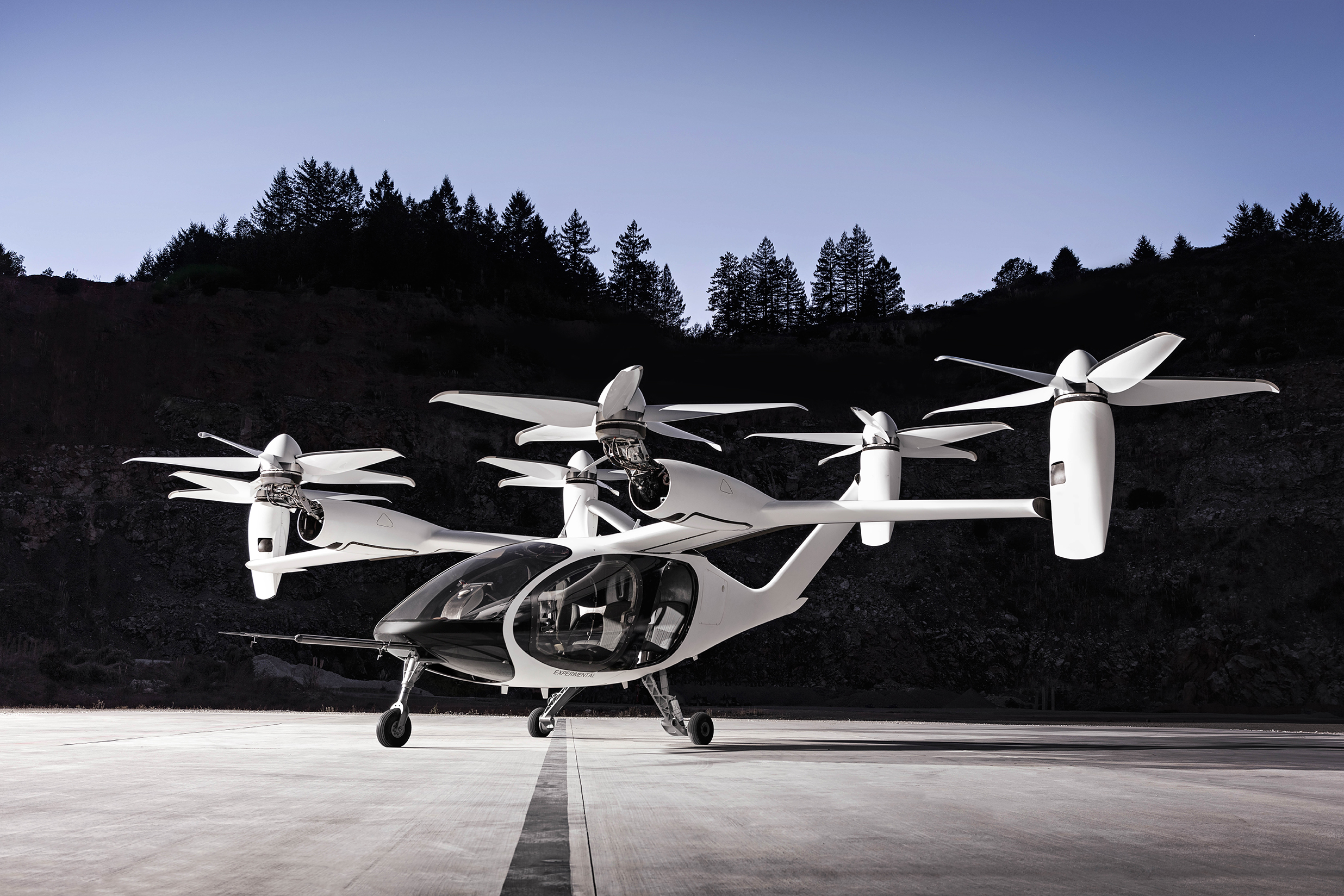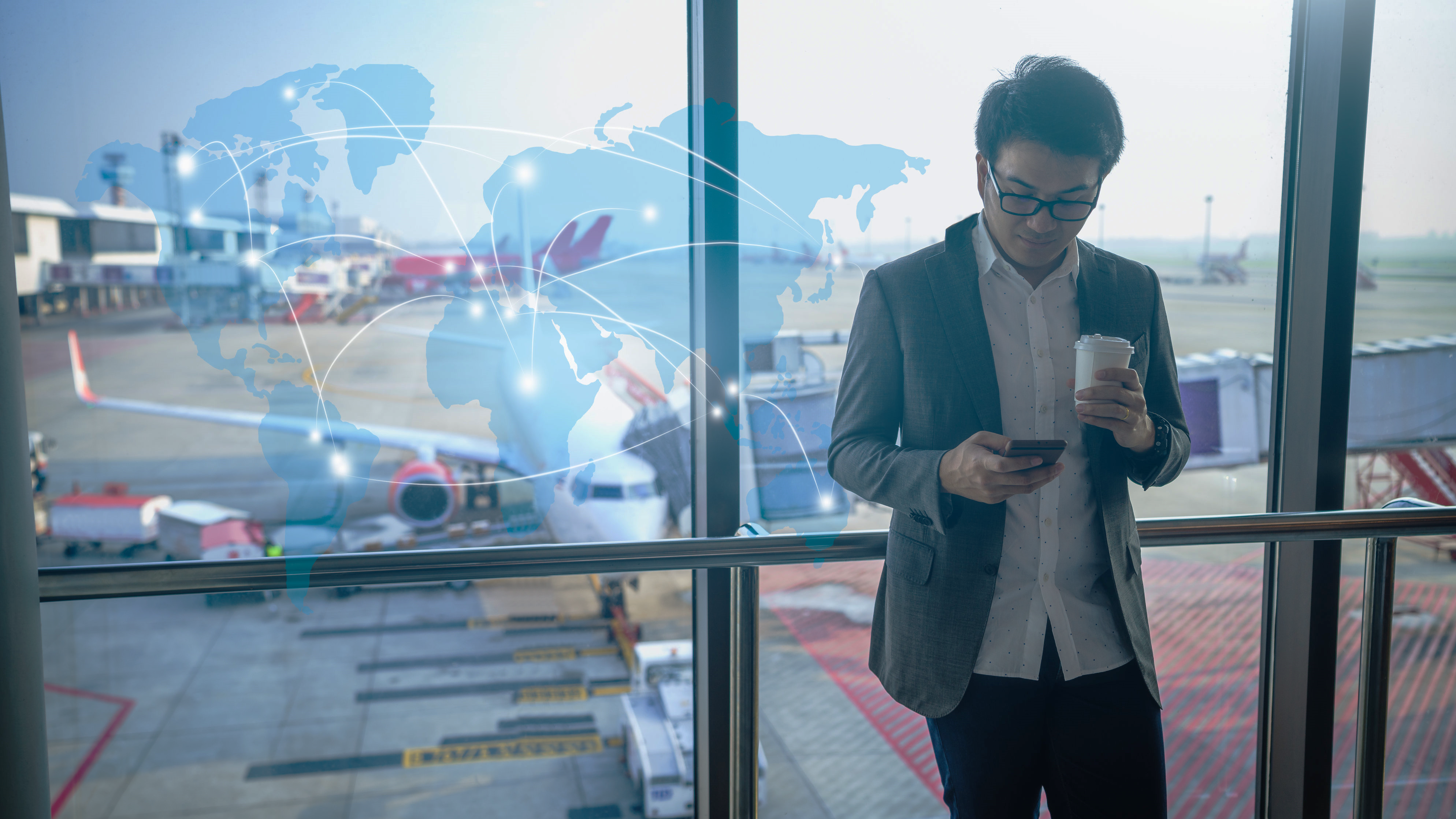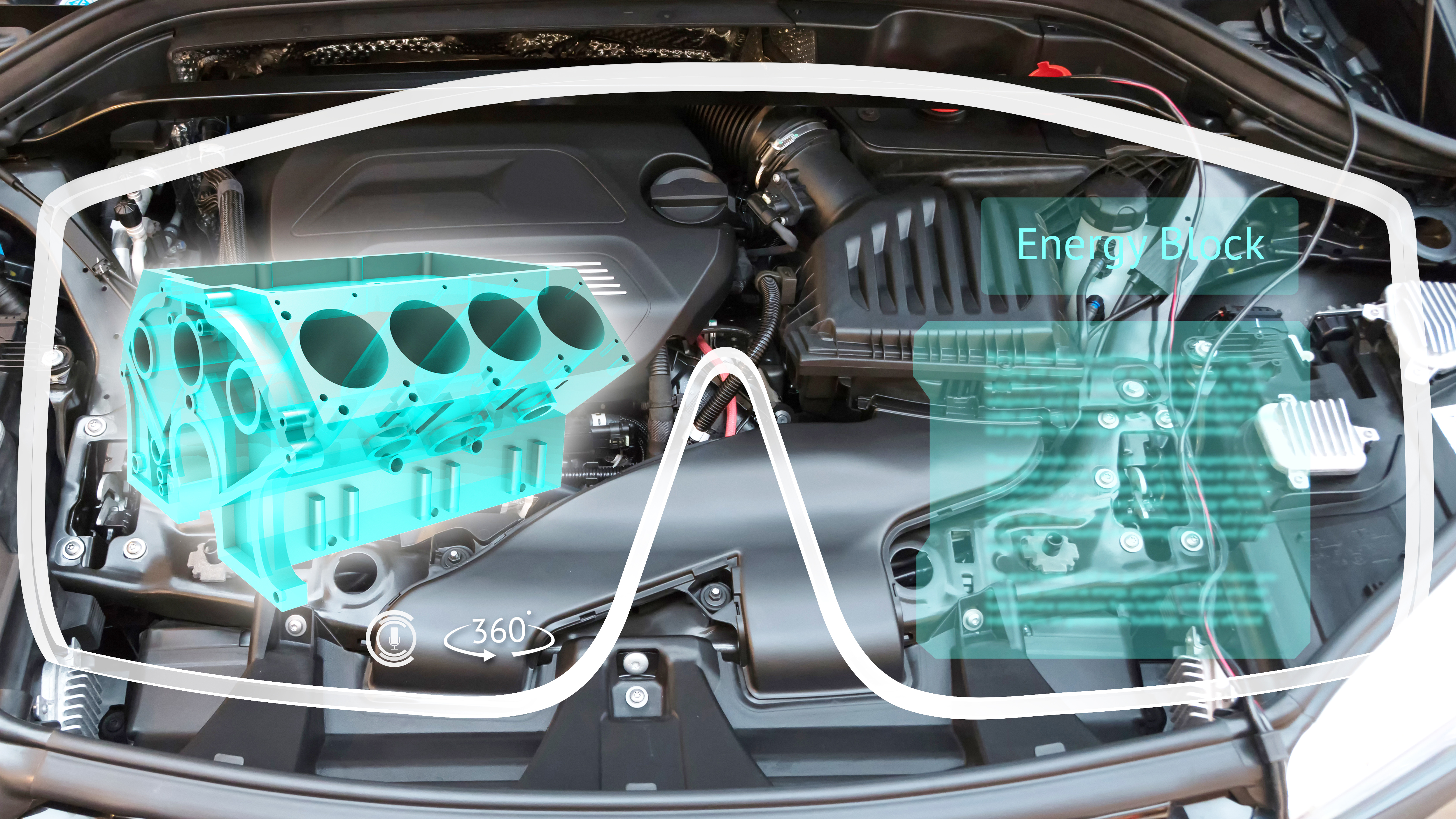10 ways 5G could transform the travel industry
From 5G-powered ‘intelligent airports’ to flying data centers, the 5G era will drastically change how we get from A to B. Here we reveal how.

How will 5G change travel? From commuting and business trips, to weekends away and taking an annual vacation, how we travel in the future, especially in the wake of the coronavirus pandemic, is likely to transform thanks to 5G technology.
At a very basic level, it’s about 5G's extra speed and capacity.
“We’re not there yet, but as 5G networks become ubiquitous, travellers will likely be able to find greater connection consistency,” says Kevin Hasley, Chief Commercial Officer at RootMetrics, about getting online via smartphones and tablets while travelling. “Currently, it’s a bit of a gamble to know what type of connection you might have while traveling abroad, but with 5G, we should start to see more consistency of performance, no matter where you travel.”
However, 5G will bring much more to the travel sector than just convenience for travellers. Just as 3G gave us mobile internet and 4G made possible mobile video and audio streaming, so 5G’s ‘killer app’ is likely to be a super-charged Internet of Things (IoT). With it rolled-out across the world, the effect on travel – from airports and taxis to private cars and trains – is likely to be massive.
Here we take a look at 10 ways that 5G is set to transform how we travel.
1. Intelligent airports

There are already a few 5G-enabled airports, including Guangzhou Baiyun Airport in China and Istanbul New Airport in Turkey, but how will 5G change airports?
“In short, 5G will deliver much more bandwidth capacity,” says Sumesh Patel, President of APAC at SITA. “For passengers, this means it will be easier for passengers to access a wider range of applications including real-time streaming as well as tracking inside and outside the airports.” However, 5G will also enable something much more fundamental. “From an airport operations perspective, a wide range of objects – whether it is baggage or aircraft tugs – will be connected through 5G, facilitating massive data exchanges that provide a real-time or historic view of airport operations,” says Patel. “This data will be invaluable when used together with artificial intelligence or business intelligence tools in driving new improvements to the operational performances of the airports.”
Get up to speed with 5G, and discover the latest deals, news, and insight!
2. Vehicle to everything (V2X)
Car travel will be transformed thanks to 5G, but more specifically because of the coming ‘vehicle to everything’ (V2X) ecosystem of transport-related applications.
“V2X is a term that refers to high-bandwidth, low latency, and highly reliable communication between a broad range of transport and traffic-related sensors,” explains Hasley. “Cars will communicate with one another, with traffic lights or parking spaces, with nearby pedestrians, or with central planning systems that are coordinating the flow of traffic.”
The end result will be travel that is more efficient, though further into the future it’s V2X that will enable fully autonomous cars and transit systems.
3. Flying data centers

According to SITA, 5G will enable the next-generation of aircraft to exchange vast amounts of data around the airport and at the gate. Everything from fuel consumption to the health of the engines, will be quickly transmitted to maintenance staff on the ground even before the aircraft lands, so staff, refuelling vehicles and even the stairs can all be ready for the arrival of a plane. The fast transmission of aircraft data, and analysis of that data, will enable predictive maintenance, quicker aircraft turn-around, and – perhaps most importantly for passengers – more on-time departures.
4. No more lost luggage

Losing luggage – and even dropping off and collecting it in a timely manner – is a major pain-point for travellers in airports and at national borders. So in the 5G era, there will be sensors on everything and geolocation will go real-time; everything will be tracked and traced – planes, buses, bags, cargo, people and pets.
Not only will geolocation make it harder to lose your luggage, but it will also assist remote bag drop-off at places like train stations and hotels before you even get to the airport. Air transport-specific and 5G-connected AI applications will biometrically-match passengers to their bags via face and fingerprint recognition, though AI will also be able to recognise unique scuff marks, creases, and material characteristics to distinguish between seemingly identical bags and match them to the correct passenger. Meanwhile, AI-assisted computer vision will continually scan boarding gate areas and intelligently predict capacity issues for hand luggage on flights.
“It’s all about using 5G to improve efficiency of operations, which absolutely has a benefit to consumers,” says Hasley. “With smart luggage tracking, for instance, the days of a ‘lost’ suitcase could finally be over.”
5. Buying a new car

Virtual reality (VR) and augmented reality (AR) are often described as the ‘low-hanging fruit’ of the 5G era. Boosted solely by increased download speeds and 5G’s super-mobile broadband speeds, some sectors are set to be truly revolutionised by 5G-powered VR and AR opportunities – such as buying a new car.
“Today, most manufacturers offer a configurator that lets you change the colour or pick different tires and rims, but with 5G, your VR headset or AR-enabling device will allow you to get behind the wheel, see your house in the rear-view mirror, and take the car for a test drive,” says Jane Geraghty, CEO of global branding and design agency Landor. “These are new experiences that businesses need to consider and ensure work technically … that test drive should feel different whether it’s with Volvo or Vauxhall, Ford or Ferrari.”
6. Location-aware AR apps

For some, the future of travel is all about location-aware AR apps that are enabled by 5G.
“An AR app could be your personal guide at the airport, pushing you duty-free offers, giving you special offers and directions to the lounge,” says Dr. John Bates, CEO of Eggplant. “It could even advise you on how to avoid the coronavirus by directing you to the nearest restroom suggesting ‘wash your hands in here’.”
Handy for passengers, such apps would also be really useful for airlines. “It could know more about where you are and track you down should you be late for the flight,” says Bates. “It can provide your gate information and how long it will take you to get there, or have an airport staff member come straight to you.” Similar apps could inform electric car drivers where to recharge, how busy the recharge bays are, and what you could do or eat while an electric vehicle recharges.
7. ‘Drone taxis’ for airports

Getting to and from the airport to the city is time-consuming. So why not fly? A new generation of eco-friendly electric vertical takeoff and landing (eVTOL) aircraft – effectively ‘5G drones’ you can sit in – are now in advanced prototype stage. Developed by the likes of Airbus, Ehang, Volocopter, Kitty Hawk, Uber Elevate, Terrafugia and PAL-V, they’re pilot-less, autonomous, and have a range of about 50 miles. Potentially perfect for transferring quickly from airport to city, or from airport to airport – such as between Heathrow and Gatwick in London, or JFK and Newark in New York – these so-called ‘drone taxis’ require 5G-powered autonomous airspace identification, crash-avoidance and geofencing so they can’t enter sensitive areas. Expect 5G-enabled air taxis to go mainstream by 2030.
8. An ‘Internet of Travel Things’

How about an IoTT? That's the Internet of Trusted Things. With 5G commonplace at airports, everything will be intelligently connected to everything else. Today’s 4G technology can manage around 10,000 devices in each square kilometer, but a 5G network can manage a million. Every single object, person, and thing – from passengers, pilots and check-in staff to luggage, lorries and your lunch – will be able to interact. Cue intelligent monitoring, with queues throughout the airport tracked, and autonomous vehicles deployed to meet disabled and elderly passengers at gates in a timely manner. Smart tugs will be sent to meet aircraft while wheelchairs, mobile kiosks, and robotic assistants will be either autonomous or controlled remotely. These kinds of collaboration between airports, airlines, ground handlers, air traffic managers and retailers will change how airports work.
9. 5G railways

How was the WiFi on your last train trip? Terrible, right? Thankfully, 5G will bring much faster, more reliable connections on trains. 5G means smaller cells since mmWaves don’t travel far, but that means a much denser network is required. If enough base stations are built along rail tracks, swapping between them will be instant, meaning fewer dropped calls and cutouts even when on a fast train. 5G will also bring real-time insight into everything from the monitoring of the queues at ticket offices and train business to AI-powered traffic forecasts and predictive maintenance of trains and infrastructure.
10. The frictionless journey
If everyone joins in and businesses fully embrace 5G, the frictionless journey could soon be possible.
“Picture this: you’re dropped off at home in your app-hailed taxi, your front door opens automatically as you approach, and the hall light switches on at the same time,” says Geraghty. “Knowing your daily routine, the central heating is already on. You switch on the oven with your voice, and ask the smart home assistant to find a recipe based on what’s in your fridge – this is what true connectivity and seamless interaction looks like.”
However, there are a lot of brands involved there, from the taxi to the smart light bulbs, the energy provider and even the recipe book.
“If any of these were to drop out, the holistic, seamless experience ends – and 5G consumers won’t accept this in their frictionless journey,” says Geraghty.
- Discover the best 5G networks in the UK and US
- Get your hands on the hottest 5G phones
- Millimeter wave: the secret sauce behind 5G
- The complete guide to 5G security
- We reveal the latest 5G use cases
- Discover the truth behind 5G dangers
- 5G towers: everything you need to know
Jamie Carter is a freelance journalist, copywriter and author with 20 years' experience. Carter has written for over 50 publications and websites, and creates content for dozens of global blue-chip brands. Carter works with publishing houses and brands in the United Kingdom, the United States, and China, where he writes primarily about travel, technology, science and nature.

